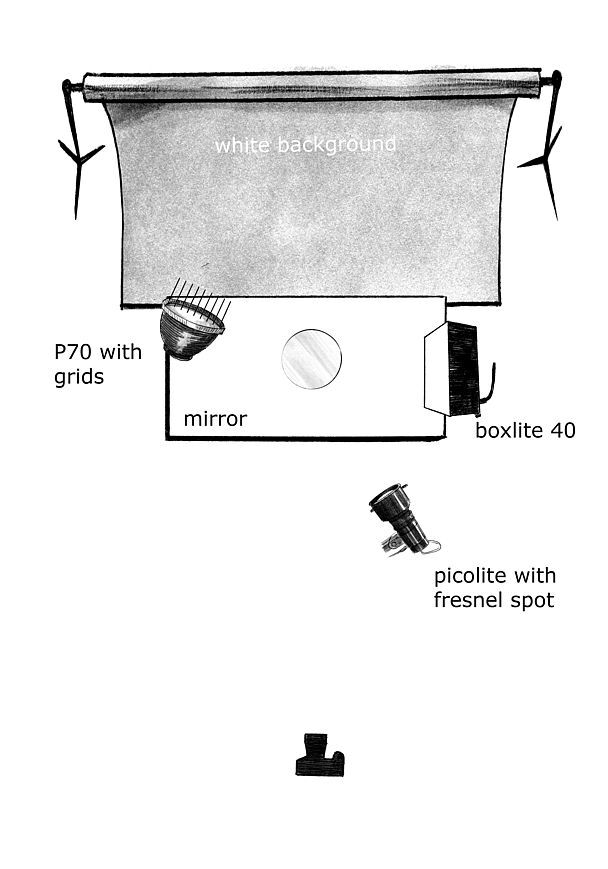How to Shoot an Exploding Bottle
Posted by Urs Recher on Sep 15th 2021

As a main light, a boxlite 40 is positioned not more than 50 cm on the
right of the object. The acrylic diffuser of this light shaper
guarantees very even and sharp edged reflections on the broken glass -
and makes it easy to wash away the beer hitting it...
The white
background is illuminated with a P70 standard reflector and honeycomb
grids. The grid itself and the distance of the reflector to the
background define its gradation.
Choosing a white background has advantages and disadvantages:
Compared to a darker background is allows you to work with rather low power settings and therefore with short flash durations.
On
the other hand, you need quite some distance between the table with the
beer and the background - otherwise the lights illuminating the object
(boxlite and picolite) will hit the background and "destroy" the nice
concentrical gradations.
Finally, a picolite with Fresnel spot
attachment is brightening up the dark areas of the liquid, where the
boxlite does not reach and the opacity is too high for the backlight to
have an influence on the brightness.
All three lights are
connected to one singe power pack Scoro S. This Scoro is set to the
shortest possible flash duration (t0.1 minimum). In this case, it is a
1/10'000 s and certainly short enough to freeze this super-fast movement
completely.
The studio is kept dark enough, that the 2 seconds
shutter speed at f22 has no effect on the photograph. A sound trigger
fires the Scoro S at the right moment, when the bottle hits the table.
If this sound trigger fires the flash almost instantly, you might have
to delay the Scoro by 1/100s or 2/100s to get the best result.
I
was using a digital medium format camera with a focal length of 120mm.
The camera settings were f22 and the shutter speed 2s at ISO 100.

